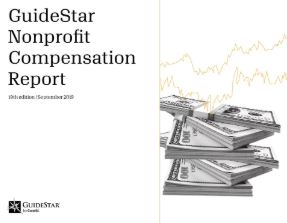Meet Our #OpenForGood Award Winner: An Interview with Craig Connelly, Chief Executive Officer, The Ian Potter Foundation
This post is part of the Glasspockets’ #OpenforGood series done in partnership with the Fund for Shared Insight. The series explores new tools, promising practices, and inspiring examples showing how some foundations are opening up the knowledge that they are learning for the benefit of the larger philanthropic sector. Contribute your comments on each post and share the series using #OpenForGood. View more posts in the series.
The Ian Potter Foundation is an Australian foundation that supports and promotes excellence and innovation working for a vibrant, healthy, fair, and sustainable Australia. In this interview, Craig Connelly shares insights with GlassPockets' Janet Camarena about how the foundation’s practices support learning and open knowledge.
GlassPockets: Congratulations on being one of our inaugural recipients of the #OpenForGood award! The award was designed to recognize those foundations that are working to advance the field by sharing what they are learning. Can you please share why you have prioritized knowledge sharing at the Ian Potter Foundation and how this practice has helped you to advance your work? Or put another way, what is the good that has come about as a result?
Craig Connelly: The Ian Potter Foundation decided to invest in our research and evaluation capability primarily to improve the quality of our grantmaking. We believe that evaluating our grantees and the work that we fund through measuring and evaluating outcomes enables us to understand the extent to which our funding guidelines are achieving the intended outcomes. This results in a more informed approach to our grantmaking which should improve the quality of our grantmaking over time.
A core part of this includes being completely transparent with our grantees and with the broader sector. To do anything otherwise is not being consistent with our expectations of our grantees. We are asking our grantees to be partners, to pursue a strategic relationship with them and that requires open and honest conversation. Therefore, we need to be an open, honest and transparent funder and demonstrate that in order to win the trust of the organizations we fund.
Examples of this transparency are the learnings that we glean from our grantees that we share with the broader sector. We’re getting very positive feedback from both funders and grantees on the quality of the learnings that we’re sharing and the value that they add to the thought processes that nonprofit organizations and other funders go through.
GP: Increasingly we are seeing foundations move toward a structure of having staff dedicated to evaluation and learning. For those foundations that are considering adding such a unit to their teams, what advice do you have about the structures needed to create a culture of learning across the organization and avoid the creation of one more silo?
CC: Anyone in a research and evaluation role needs to be an integral part of the program management team. The research and evaluation process informs our grantmaking. It needs to assist the program managers to be better at what they do, and it needs to learn from what the program managers are doing as well. You don’t want it to be a silo, it is just another function of your program management team. It is an integral part of that team and it is in constant communication both with the program management team and with grantees from day one.
GP: As you heard during the award presentation, one of the reasons the Ian Potter Foundation was selected to receive this award is because of how you prioritize thinking about how stakeholders like grantees might benefit from the reports and knowledge you possess. We often hear that while there is a desire to share grantee reports publicly, that there are reputational concerns that prevent it or that to scrub the reports of sensitive information would be too time consuming, yet you do it for all of your portfolios. What are your tips for how to keep this a manageable process?
CC: The initial work to compile and anonymize our grantee learnings required some investment in time from our Research & Evaluation Manager and communications team. To make this task manageable, the work was tackled one program area at a time. Now that a bank of learnings has been created for each program area, new learnings are easily compiled and added on a yearly basis. This work is scheduled at less busy times for those staff involved. The Ian Potter Foundation is also looking at ways learnings can be shared directly from grantees to the wider nonprofit sector. One idea is to create a forum (e.g. a podcast) where nonprofits can share their experiences with their peers in the sector.
GP: A concern we often hear is that a funder creating a culture of learning leads to an increased burden on grantees who are then asked for robust evaluations and outcomes measures that no one is willing to pay for. Does The Ian Potter Foundation include funding for the evaluations and reporting or other technical assistance to mitigate the burden on grantees?
"...we need to be an open, honest and transparent funder and demonstrate that in order to win the trust of the organizations we fund."
CC: One of the benefits that we found at The Ian Potter Foundation of having a Research & Evaluation Manager becoming an integral part of our process is that our authorizing environment – our board and the committees responsible for program areas – have become very comfortable including funding evaluation for all of our grants. We now also understand what it costs to complete an effective evaluation. We often ask grantees to add more to their budget to ensure a good quality evaluation can be completed as part of the grant.
GP: Learning is a two-way street and foundations are both producers and consumers of knowledge. Let’s close this interview with hearing about a noteworthy piece of knowledge you recently learned thanks to another foundation or organization sharing it, and how it helped inform your own work.
CC: Yes, we have a couple of examples I can point to. The first comes from our Education Program Manager, Rikki Andrews, who points to the creation of the Early Childhood Impact Alliance (ECIA) through a grant to the University of Melbourne. The purpose of the ECIA is to convene, connect and increase understanding of research and policy among early childhood philanthropic funders, to ensure there is more strategic and concerted philanthropic support of research and its application.
Additionally, the Foundation’s Senior Program Manager, Dr. Alberto Furlan, explains, ‘We are in the process of learning from organizations we partner with all the time. In the last few years, program managers have been prioritizing extensive site visits to shortlisted applicants to discuss and see the projects in situ. In a ‘big country’ such as Australia, this takes a considerable amount of time and resources, but it invariably pays off. Such visits highlight the importance of relationship building deep and honest listening when partnering with not-for-profits. The Foundation prides itself in being open and approachable and site visits greatly contribute to understanding the reality of the day-to-day challenges, and successes, of the organizations working on the ground.’
--Craig Connelly & Janet Camarena


